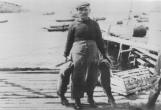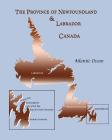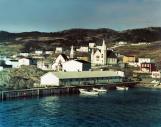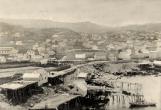1
Traditional boat launch from the Winterton Boat Building and Community Museum, in the summer of 20032003
Winterton, Newfoundland and Labrador, Canada

2
Boat building in Winterton, Newfoundland likely started when the seasonal fishermen decided to settle permanently during the last half of the seventeenth century. Attracted by the abundance of fish off the coast of the island, these early fishermen-settlers had to be resourceful to live in this new harsh environment. They used local timbers, basic woodworking skills, and simple boat building design and construction techniques passed on from their English and Irish ancestors, to fashion sturdy and seaworthy small craft for the inshore fishery. The fishery was the means of their survival as almost all of the fish they caught were traded to merchants for essential goods like flour and fishing equipment.This part of the world has a long tradition of boat building, beginning with the indigenous North American people who lived both on the island of Newfoundland and along the coasts and rivers of Labrador for thousands of years. These people lived off the land and built boats such as bark canoes and skin-covered kayaks to harvest the sea. Also, in the 990s, the Norse, who as far as we know were the first Europeans to come to North America, established what was probably a boat repair station at L'Anse aux Meadows, Newfoundland. This was five hundred years before Cabot made his voyage of discovery.
The traditional boatbuilders of Winterton trace their roots back to the voyage of John Cabot's "Matthew" in 1497 and the subsequent opening of the Newfoundland fishery in the 16th and 17th centuries. Wooden boats, built using traditional methods, are still being constructed in Winterton today. Each year one is built at the Winterton Boat Building and Community Museum and launched in the harbour. This museum preserves the tools, methods and story of boat building while reaching out to the public and the younger generation for whom the skills of building wooden boats are no longer taken for granted.
4
Winterton lies on the west side of the Bay de Verde Peninsula, which is part of the Avalon Peninsula, the eastern-most area of Newfoundland, the island portion of the province of Newfoundland and Labrador.Throughout Newfoundland and Labrador's history its ownership and name have changed:
1497 The Isles of Newfoundland were considered a possession of England.
1763-73 The coast of Labrador came briefly under Newfoundland jurisdiction
1809 Labrador became part of Newfoundland.
1825-1929 Newfoundland (Including Labrador) was a colony of Great Britain.
1929-1949 Newfoundland was a dominion of the British Empire.
1949 Newfoundland (including Labrador) became a province of Canada.
2001 The name of the province was legally changed to Newfoundland and Labrador.
6
Winterton was originally called Silly Cove, perhaps after a family by that name. As time went by and the jokes about Silly Covers inevitably increased, a "c" was inserted to change the name to Scilly Cove, which has led some to suggest that the community was named after the Isles of Scilly located off the tip of Cornwall (south-west England). However, it is unlikely that the Isles of Scilly had any direct connection to our community. In any case, adding the "c" did not put a stop to the jokes. In 1912 the serious-minded, sober, God-fearing folks of Scilly Cove decided to call the community Winterton, after Governor Winter of Newfoundland. These three names all refer to the same community - Silly Cove or Scilly Cove prior to 1912, and Winterton after 1912.8
Settlements in Newfoundland were found along the waters edge in bays, coves and inlets near fishing grounds. The locations chosen usually provided protection from the harsh seas and weather. Scilly Cove (Winterton) was settled due to its rich inshore fishing grounds despite the fact that the harbour gave little protection from the northerly winds and seas that are common during the fall and winter. Small boats had to be pulled up in the winter and large boats moved to other harbours, including near-by New Perlican.10
The shores of the community were lined with flakes, raised wooden platforms for drying salted codfish. These flakes have long since disappeared as technology changed and fish were increasingly preserved by freezing. However, some individuals still enjoy salt fish, and will salt and dry a few for their own use.12
Next to the flakes are small buildings called stages. These were used to house fishing gear and gut, clean and salt the fish before they were laid out to dry on the flakes.13
George Gregory of Scilly Cove (Winterton), with two codfish, quite large by today's standards.1910
Scilly Cove (Winterton), Newfoundland





